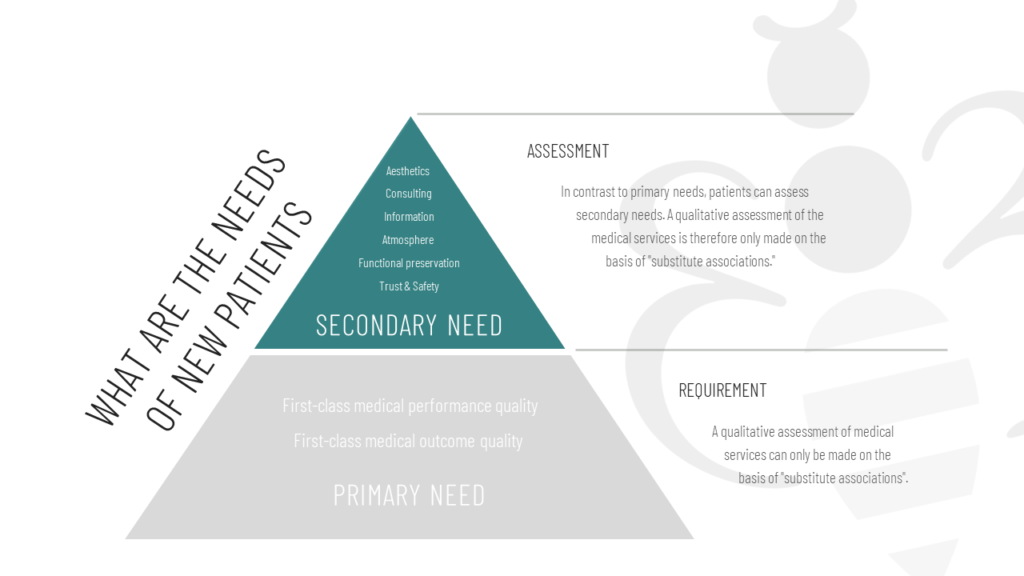The term marketing is now also established in dental practices. Currently, however, it is mostly understood concerning the acquisition of new patients. But does this alone make sense? Shouldn’t the target group “existing patients” also play an important role in the marketing and communication process? This question is also important in designing a practice’s website. After all, practice websites are now the linchpin of a modern communication strategy.
The role of the practice homepage in referral marketing
Most dental practice websites are primarily aimed to attract new patients. But how do new patients become aware of a dental practice’s website? Often through recommendations from family, friends and acquaintances, friends and acquaintances – in other words, thanks to existing patients!
In recent years, original referral marketing (word-of-mouth) has gained a whole new dynamic through the internet. This is because the incredibly high penetration of smartphones means that any recommendation information is looked up on the internet. This confirms or rejects it. Consequently, it is not surprising that more than 90 percent of referral patients have visited the website before the first contact with the practice.
Practice TIP
If a patient who is willing to change asks in private, he or she will usually receive more than one recommendation, as often more than one trusted person is asked. The website is then the (!) decision point for or against a dental practice. The patient makes his or her decision depending on how professional and sympathetic the practice’s website looks. How else should a patient decide between two or three very positive recommendations from friends, etc.?
The new patient makes only one decision: “Is this the right practice for me? The internet thus dissolves the so-called “black box” of the recommendation (“Who or what can I expect in the practice?”) and enables the user to get a picture of the practice. New patients are strongly influenced visually and make the decision for or against a practice based on an assumption of quality and competence.
Here, the professionalism of the external presentation is particularly important.
The objective must therefore be to confirm the expectations of the new patient-generated by the recommendation through the website. A basis of trust must be created that serves both primary and secondary needs (see diagram).

ASSESSMENT
A qualitative assessment of medical services is only made based on “substitute associations”. After all, the patient is usually not a specialist, i.e. dentist. Therefore, it is particularly important to enhance professionalism and competence on the website. This can be achieved through the integration of professional aesthetic photos, which show both the everyday working life as well as the practice equipment and the individual characteristics.
Practice TIP
The first level of a website should not contain too much detailed information. The patient wants to get an overview in the shortest time and make a decision quickly. Important: The visual impression of the website plays a major role – it should reflect the professional competence of the dentist.
Especially for new patients, the following contents are important on the website:
- Team: Introduction of the treating dentists as well as the team.
- Practice and service overview: Philosophy, equipment, and technology
- A listing of special features and unique selling points
- Monthly News: Current news from the practice signal: “Our practice is up to date!”
- Contact details: Location including a link with interactive route planner, opening hours, online appointment calendar as an additional point of contact outside opening hours
- Services – but only concerning special problems or interests of the patient. Against the background of a decision for or against a practice, a few details are usually sufficient – unless the patient is looking for a specialist and has corresponding previous experience.
As a rule, a potential new patient spends only 60 to 90 seconds on the website of a practice website for only 60 to 90 seconds. This is usually enough for them to gain confidence in the performance of the practice – or not. Based on this circumstance, the conclusion could therefore be drawn that patients are only offered content on the website for 60 to 90 seconds. After all, this covers his “normal” need for information. But wouldn’t it make sense to offer more here?
To learn more about strategies you can adopt to make your website appealing, contact us. We will be happy to support you and be at your side. We want to fly together!